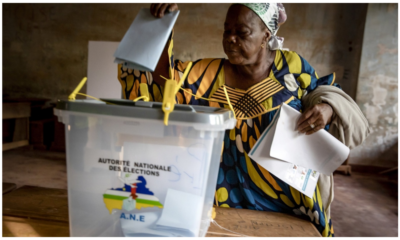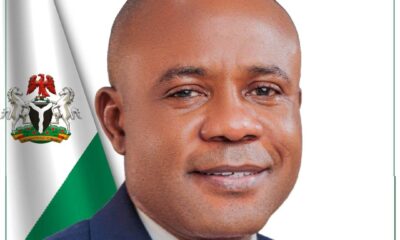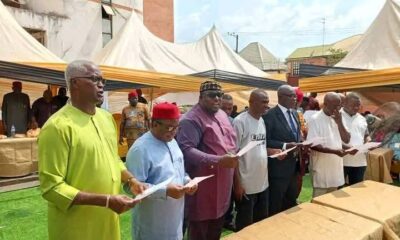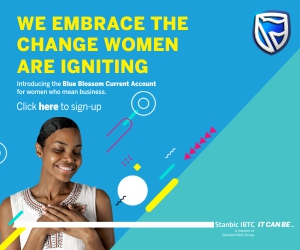GRTech
NCC Reacts To Reports On 5G Having A Link With Covid-19


Telecom industry regulator, the Nigeria Communications Commission (NCC) has cleared doubts over 5G, COVID-19 and security.
Reports that have emerged in the last few days centered on how the fifth-generation network is linked with the coronavirus pandemic.
Reacting to the development, Dr. Henry Nkemadu, Director, Public Affairs, NCC released a statement which answers many questions on the 5G network.
Read full statement: In view of the recent development in which misleading materials with no proven evidence are being circulated to link CORONAVIRUS or COVID-19 with 5G Technology, it has become imperative for the Nigerian Communications Commission (NCC) to provide the following clarifications:
Firstly, there is no correlation between 5G Technology and COVID-19. 5G is an advancement on today’s 4G technology, designed to transform the world positively.
Secondly, there is no deployment of 5G in Nigeria at the moment. The NCC back in November 2019 approved trial test for 5G for a period of three (3) months, and the trial has been concluded and installation decommissioned.
The trial among others was to study and observe any health or security challenges the 5G network might present. Relevant stakeholders including members of the security agencies were invited to participate during the trial.
The NCC will continue to maintain its policy of technology neutrality and will continue to encourage Service Providers to deploy the best technology that will meet the needs of the society in a secured and friendly manner.
The following are some Frequently Asked Questions :
- What is 5G ?
Ans: 5G is a fifth generation of mobile technology which is an improvement on today’s 4G technology with enhanced capabilities. The 5G technology provides the platform for new and emerging technologies such as Internet of Things (IoT), Artificial Intelligence (AI) and Big Data to improve the way we live and work.
- Do we have 5G network in Nigeria now?
Ans: No. There is no 5G network in Nigeria at the moment. What we had was a trial test for 3 months which has since been concluded.
- When are we expecting 5G in Nigeria?
Ans. No exact time frame but when conditions are right and all doubts are cleared.
- Do we have spectrum for 5G in Nigeria?
Ans. Yes, particularly the millimetre wave spectrum from 24GHz and above are available.
- Have we given out 5G spectrum to operators?
Ans. No. It will be auctioned at the appropriate time.
- Are there 5G deployment around the world?
Ans. Yes, in countries like South Korea, China, USA, Germany and others since middle of 2019.
- Is the radiation from 5G different from those of 2G, 3G and 4G?
Ans. No, they all belong to the same class of Non-ionizing Radiation.
- Who is going to Allocate spectrum for 5G in Nigeria?
Ans. The National Frequency Management Council (NFMC) Chaired by the Honourable Minister of Communications and Digital Economy has the responsibility for allocating bulk spectrum for various services.
- Should I be concerned about 5G technology?
Ans. No, nothing to worry about. Safety and human health are top priority in the design and deployment of 5G.
- What are the benefits of 5G ?
Ans. 5G technology will transform the world by connecting everything with everybody. It will create millions of jobs, it will add billions of dollars to the economy (GDP), and can solve some of our problems such as insecurity and improve governance and efficiency in the society.
- Is 5G causing CORONAVIRUS or COVID-19?
Ans. No, there is no link whatsoever between 5G and CORONAVIRUS or COVID-19.
- Should I ignore all the negative narratives I am hearing about 5G ?
Ans. No, but rely on information from world standards making bodies such as WHO, ITU, IEEE and industry experts for advice when in doubt.
- Is there standard limit set for Radiation from mobile devices?
Ans. Yes, there is radiation emission limits set by the International Commission for Non-ionizing Radiation Protection (ICNIRP) below which the radiation is considered safe for humans.
- Are the mobile network operators in Nigeria conforming to the Radiation emissions limits?
Ans. Yes, the NCC has been regularly conducting measurements of radiation emissions from base stations across the country and they are all well below the set limits.
- Is 5G same as Fibre cable?
Ans. No, fibre cable is a terrestrial technology for broadband that existed for decades while 5G is a new mobile technology for enhanced quality of service as explained in Question 1 above.
- Are there other sources of radiation apart from mobile Base stations?
Ans. Yes, there are other sources of radiation which include television stations, radio broadcasts stations, wifi and so on. They all belong to the class of radiation considered to be safe for humans when operated below the set limits.
- Who owns 5G?
Ans. 5G is not owned by anybody but collection of technologies, standards and processes agreed at the international level by standards making bodies.
- Has NCC issued licenses for 5G in Nigeria?
Ans. No, NCC has not issued any licence for 5G in Nigeria. NCC is technology neutral as such we don’t license technology but assigns spectrum to operators for deployment of any service when allocated by NFMC.
- Why are some operators rolling out fibre during the lockdown period?
Ans. As a result of the lockdown, the amount of voice and data usage has increased by huge amounts and there is need to expand the network to provide optimum quality of service to users sitting at home. Telecom is also critical for information dissemination during the lockdown.
-



 GRPolitics4 days ago
GRPolitics4 days agoPeaceful Voting Underway in Central African Republic as 2025 General Elections Commence
-



 Politics3 days ago
Politics3 days agoEnugu Group Lauds Mbah’s Superlative Performance, Pledges 2027 Support
-



 Culture4 days ago
Culture4 days agoAwka Community Elects Fredrick Chinwuba New President General of Awka Development Union of Nigeria (ADUN)
-



 News3 days ago
News3 days agoGOCOP Condoles With Freedom Online Publisher on Son’s Death








